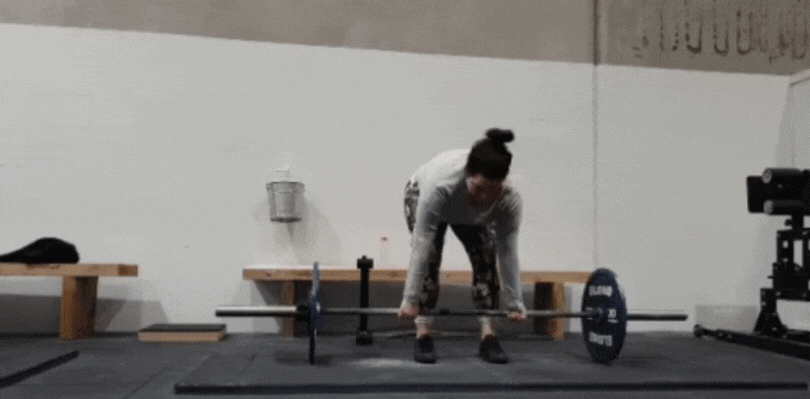Are you or someone you know living with the often debilitating challenges of fibromyalgia? If so, you’re not alone. Fibromyalgia is a chronic pain condition that affects millions of individuals worldwide, impacting their daily lives and overall well-being. While there may be no cure, there is hope in managing the symptoms and improving your quality of life.
In this blog post, we’re excited to share with you seven incredible exercises specially tailored to help alleviate the pain and discomfort associated with fibromyalgia. These exercises are not only effective but also safe and easy to incorporate into your daily routine. Whether you’re seeking relief from muscle stiffness, fatigue, or sleep disturbances, our carefully curated list of exercises will empower you to take control of your fibromyalgia journey. So, let’s embark on this empowering path to a healthier and more vibrant life together.
Exercises For Fibromyalgia
Here are some exercises tailored for individuals with fibromyalgia:
Yoga And Tai Chi

Gentle, low-impact exercises like yoga and Tai Chi can be highly beneficial for fibromyalgia sufferers. These practices focus on stretching, balance, and controlled breathing, which can help reduce pain, improve flexibility, and promote relaxation. Start with beginner-level classes and gradually progress as your body becomes more accustomed to the movements.
Swimming And Water Aerobics

Exercising in warm water can provide significant relief to fibromyalgia patients. The buoyancy of the water supports your body, reducing the impact on joints and muscles. Swimming and water aerobics improve cardiovascular fitness, muscle strength, and overall endurance without causing excessive strain.
Walking

A simple yet effective exercise, walking can be tailored to your fitness level. Begin with short, manageable walks and gradually increase your distance over time. Walking not only improves cardiovascular health but also helps maintain muscle tone, boost mood, and reduce fatigue.
Cycling

Stationary or outdoor cycling is another low-impact option for fibromyalgia sufferers. It promotes cardiovascular fitness, enhances leg strength, and allows you to control the intensity of your workouts. Make sure to adjust the seat and handlebars to ensure a comfortable riding position.
Strength Training

Incorporating light resistance training with dumbbells, resistance bands, or even bodyweight exercises can help strengthen muscles and improve joint stability. Focus on all major muscle groups, but start with low weights and progress gradually to prevent overexertion.
Pilates
Pilates emphasizes core strength, flexibility, and balance, making it an excellent choice for fibromyalgia patients. The controlled movements in Pilates can alleviate muscle tension and improve posture, helping to reduce pain and discomfort.
Stretching And Relaxation Techniques
Regular stretching, along with relaxation techniques such as deep breathing and meditation, can be incredibly effective in managing fibromyalgia symptoms. Stretching helps improve range of motion, while relaxation techniques reduce stress and promote better sleep.
Remember that it’s crucial to consult with your healthcare provider or a physical therapist before starting any new exercise regimen, especially if you have fibromyalgia. They can help you create a customized plan that suits your individual needs and limitations. Additionally, start slowly and listen to your body; if an exercise causes increased pain or discomfort, adjust or discontinue it as needed. Over time, consistent exercise can lead to reduced fibromyalgia symptoms, improved physical function, and a better overall quality of life.
Benefits Of Exercises For Fibromyalgia
Here are some benefits of incorporating exercises into your routine if you have fibromyalgia:
Pain Reduction
Regular exercise helps release endorphins, the body’s natural painkillers. These endorphins can alleviate the chronic pain associated with fibromyalgia by reducing pain perception. Additionally, exercises like yoga and stretching promote muscle relaxation, easing tension and discomfort.
Improved Sleep Quality
Many fibromyalgia sufferers experience disrupted sleep patterns. Engaging in exercises that promote relaxation, such as yoga and meditation, can help regulate your sleep cycle. Physical activity also tires the body, making it easier to fall asleep and stay asleep through the night.
Enhanced Mood
Exercise is known to boost mood and reduce symptoms of depression and anxiety. Regular physical activity increases the production of neurotransmitters like serotonin and dopamine, which can help combat the emotional and psychological challenges often associated with fibromyalgia.
Increased Energy Levels
Fibromyalgia often brings fatigue and reduced stamina. Engaging in low-impact exercises like swimming and walking can help improve your cardiovascular fitness and overall endurance. Over time, this can lead to increased energy levels and a reduced feeling of fatigue.
Better Muscle Strength And Flexibility
Strengthening exercises, such as resistance training and Pilates, can help you build muscle strength and enhance joint stability. Improved flexibility through stretching can ease muscle tightness and increase your range of motion, reducing the risk of injury and discomfort.
Enhanced Quality Of Life
Perhaps the most significant benefit of these exercises is an overall improvement in your quality of life. By managing pain, enhancing mood, increasing energy, and improving physical function, you’ll be better equipped to participate in daily activities, pursue hobbies, and enjoy a more fulfilling life despite fibromyalgia.
It’s important to note that while these exercises offer numerous benefits, it’s essential to tailor your exercise routine to your specific needs and limitations. Always consult with a healthcare provider or physical therapist before starting any new exercise program, and make sure to listen to your body throughout your workouts. Over time, with consistent effort, you can experience significant improvements in your fibromyalgia symptoms and overall well-being.
What Is Fibromyalgia
Fibromyalgia is a chronic and often debilitating medical condition characterized by widespread musculoskeletal pain, fatigue, and tenderness in specific areas of the body. Its exact cause remains unknown, but it is believed to involve abnormalities in how the brain and spinal cord process pain signals. Common symptoms include chronic pain, sleep disturbances, cognitive difficulties (often referred to as “fibro fog”), and heightened sensitivity to pressure and touch.
Furthermore, fibromyalgia predominantly affects women and can significantly impact daily life, leading to reduced physical function and quality of life. Management typically involves a combination of medications, lifestyle adjustments, and physical therapy to alleviate symptoms and improve overall well-being.
Tips And Techniques To Do Exercises For Fibromyalgia
Here are a few tips and techniques to help you perform exercises when living with fibromyalgia:
Consult With A Healthcare Provider
Before starting any exercise program, it’s crucial to consult with your healthcare provider, preferably one familiar with fibromyalgia. They can assess your individual condition, provide recommendations, and ensure that exercise is safe and suitable for you.
Start Slow And Gradual
Begin with low-intensity exercises and gradually increase the duration and intensity over time. This approach helps minimize the risk of overexertion and muscle soreness. Listen to your body and rest when needed. Gentle stretching and warm-up exercises are essential before starting more intense workouts.
Choose Low-Impact Activities
Opt for low-impact exercises that are easy on the joints and muscles. Swimming, walking, and stationary cycling are excellent choices. These activities provide cardiovascular benefits without subjecting your body to excessive stress. Water-based exercises, in particular, can be very soothing for fibromyalgia sufferers due to the buoyancy of water.
Incorporate Strength And Flexibility Training
Include strength training exercises to build muscle and improve joint stability. Use light weights, resistance bands, or bodyweight exercises like squats and lunges. Additionally, prioritize flexibility training through gentle stretching and activities like yoga or Tai Chi to reduce muscle tension and enhance range of motion.
Listen To Your Body And Pacing
Pay close attention to how your body responds to exercise. If you experience increased pain or fatigue, don’t push through it. Instead, modify the exercise or take a break. Pacing is crucial; it’s better to do shorter, more frequent workouts than to overexert yourself in a single session. Keep a journal to track your progress and identify what exercises work best for you.
Remember that the goal of exercise with fibromyalgia is not to push yourself to the limit but to improve your overall well-being gradually. Consistency is key, and over time, you may experience reduced symptoms and an improved quality of life.
FAQ
Are these exercises suitable for all fibromyalgia patients, regardless of their fitness level?
While the exercises mentioned in the blog post are generally suitable for individuals with fibromyalgia, it’s essential to customize your exercise routine to your specific fitness level and limitations. Not all exercises may be appropriate for everyone. Consult with a healthcare provider or physical therapist to create a personalized exercise plan that considers your unique needs and abilities. They can help you start with exercises that match your current fitness level and gradually progress as your strength and endurance improve.
Can I do these exercises during a fibromyalgia flare-up when my symptoms are at their worst?
During a fibromyalgia flare-up, it’s essential to prioritize rest and gentle self-care. Intense physical activity can exacerbate symptoms during this time. Instead, focus on relaxation techniques, gentle stretching, and deep breathing exercises to manage pain and discomfort. As your symptoms subside, you can gradually reintroduce exercises from the list mentioned in the blog post. Always listen to your body and avoid pushing yourself too hard during flare-ups.
How long should I expect to see improvements in my fibromyalgia symptoms with these exercises?
The timeline for experiencing improvements in fibromyalgia symptoms through exercise varies from person to person. Some individuals may notice positive changes in a few weeks, while others may take several months to see significant improvements. Consistency is key. It’s important to stick with your exercise routine and gradually increase the intensity and duration over time. Additionally, the combination of exercise with other fibromyalgia management strategies, such as medication and stress reduction techniques, can further enhance the effectiveness of your treatment plan. Always communicate with your healthcare provider to track your progress and make necessary adjustments.

